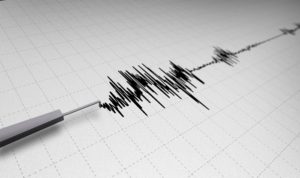Japan and Ecuador Earthquakes Highlight Supply Chain Risks
By on Apr 19, 2016
 comments powered by Disqus
comments powered by Disqus
Another natural disaster brings forth another reminder of the importance of supply chain risk mitigation. This time, two earthquakes on opposite sides of the Pacific Ocean have impacted lives as well as supply chains.

Last week’s earthquake and strong pre and post aftershocks in Japan have resulted in numerous disruptions for manufacturers.
According to Reuters:
- Toyota announced on Sunday it would suspend production in stages at its plants across Japan.
- Sony Corporation’s production would remain halted at its image sensor plant in Kumamoto as it assesses structural and equipment damage. Meanwhile its Nagasaki and Oita plants which also produce image sensors have resumed operations.
- Renesas Electronics Corp sustained damage to some equipment at its plant in Kumamoto which produces microcontroller chips for automobiles.
Lessons from the 2011 earthquake and tsunami catastrophe were learned for some manufacturers as the ‘just-in-time’ production philosophy was questioned. In addition, since 2011, automotive manufacturers such as Toyota and Nissan developed supply chain databases which provide detailed views of their supplier base to identify how their supply chain may be disrupted during emergencies. However, a potential lesson to learn from this recent event for Toyota, in particular, may be to implement a more rapid response system between all supply chain partners and perhaps encourage its partners to rethink ‘just-in-time’ inventory needs. Reuters reports that Toyota’s suspension of domestic production in part stems from a shortage of parts produced by some of its supply chain partners. As a result, it is checking the status of damage at its other suppliers.
Reuters further notes that Renesas Electronics has not been stocking inventory but rather has begun to standardize more parts to enable in-house production at alternative plants during emergencies.
Across the Pacific, Ecuador suffered a 7.8 magnitude earthquake along its coast. The epicenter was located in the northwest part of the country, home to agricultural and fishing industries as well as the Galapagos Island. In addition, there are several ports including Esmeraldas’ international seaport which serves as a major trading hub for the region’s agriculture and lumber resources. Also the Balao terminal is considered an important oil processing facility. While it’s too early to assess the complete damage, it is being reported that damage is extensive.
Although one cannot completely be prepared for such disasters, one can, however, develop a supply chain plan that helps mitigate as much of the risk as possible.
A few thoughts to keep in mind include:
- On a regular basis, screen and monitor current and potential suppliers with respect to potential supply chain risks.
- Identify and require critical suppliers to produce a detailed plan of disruption awareness and to identify supply chain risk management capabilities that can be executed when disruptions occur in the supplier’s own supply base.
- Implement a system-wide visibility and supply chain intelligence process that provides real-time or close to real-time data relating to demand, inventory, and capacity levels at key nodes in the supply chain.
- Identify and train key employees and groups to improve real-time decision-making capabilities, and provide them with plans and processes for managing disruptions when they occur.
Despite questions concerning the viability of global supply chains, they will continue to exist, but with such supply chains comes additional risks from natural disasters such as earthquakes to political, economic and labor risks. Be prepared for the possible as well as the impossible – just in case – by creating a tight supply chain plan with partners, communicating and sharing it with all involved parties and updating it on a regular, on-going basis.
